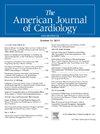内膜下跟踪和再进入及投资程序:当前应用和未来方向。
IF 2.3
3区 医学
Q2 CARDIAC & CARDIOVASCULAR SYSTEMS
引用次数: 0
摘要
为了提高 CTO 经皮冠状动脉介入治疗(PCI)的成功率并最大限度地降低风险,CTO 改造程序(投资程序)的开发和使用越来越频繁。目前出现了两种关键技术:内膜下跟踪和再入路(STAR)和内膜下斑块改造(SPM)。这两种方法都需要分阶段进行,先进行一次斑块改造手术,数周后再进行第二次支架植入手术。这两种方法都需要进入斑块外空间(EPS)并使用聚合物护套线进行布线,但与 SPM 不同的是,SPM 只需要对整个 CTO 区段的 EPS 进行血管成形术,而 STAR 则需要在血管成形术前重新进入 CTO 远端的真正管腔。STAR 和 SPM 在很多方面代表了我们在复杂病例中进行 CTO PCI 时从一步法到两步法的范式转变。在这篇综述中,我们讨论了这些手术的技术方面,以及指向这些技术未来的争议和正在进行的试验。我们还重点介绍了基于非设备和血管内超声的逆行剥离和再入路方法,这些方法为 CTO 术者处理具有挑战性的病例提供了工具包。本文章由计算机程序翻译,如有差异,请以英文原文为准。
Sub-Intimal Tracking and Re-Entry and Investment Procedures: Current Applications and Future Directions
In seeking to improve upon chronic total occlusion (CTO) percutaneous coronary intervention success rates and minimize risk, CTO modification procedures (investment procedures) have been developed and utilized with increasing frequency. Two key techniques have emerged: subintimal tracking and re-entry (STAR) and subintimal plaque modification (SPM). Both require a staged approach with an index procedure for plaque modification and a second procedure weeks later for stenting. Both approaches require entry and wiring with a polymer-jacketed wire in the extra-plaque space, yet unlike SPM, which exclusively requires angioplasty of the extra-plaque space throughout the CTO segment, STAR also involves re-entry into the true luminal distal to the CTO before angioplasty. STAR and SPM, in many ways, represent a paradigm shift in our approach to CTO percutaneous coronary intervention from a 1-step to a 2-step approach in complex cases. In this review, we discuss the technical aspects of the procedures, and controversies and ongoing trials pointing to the future of these techniques. We also highlight non-device-based and intravascular ultrasound-based approaches to anterograde dissection and re-entry, which add to the CTO operator's toolkit for challenging cases.
求助全文
通过发布文献求助,成功后即可免费获取论文全文。
去求助
来源期刊

American Journal of Cardiology
医学-心血管系统
CiteScore
4.00
自引率
3.60%
发文量
698
审稿时长
33 days
期刊介绍:
Published 24 times a year, The American Journal of Cardiology® is an independent journal designed for cardiovascular disease specialists and internists with a subspecialty in cardiology throughout the world. AJC is an independent, scientific, peer-reviewed journal of original articles that focus on the practical, clinical approach to the diagnosis and treatment of cardiovascular disease. AJC has one of the fastest acceptance to publication times in Cardiology. Features report on systemic hypertension, methodology, drugs, pacing, arrhythmia, preventive cardiology, congestive heart failure, valvular heart disease, congenital heart disease, and cardiomyopathy. Also included are editorials, readers'' comments, and symposia.
 求助内容:
求助内容: 应助结果提醒方式:
应助结果提醒方式:


